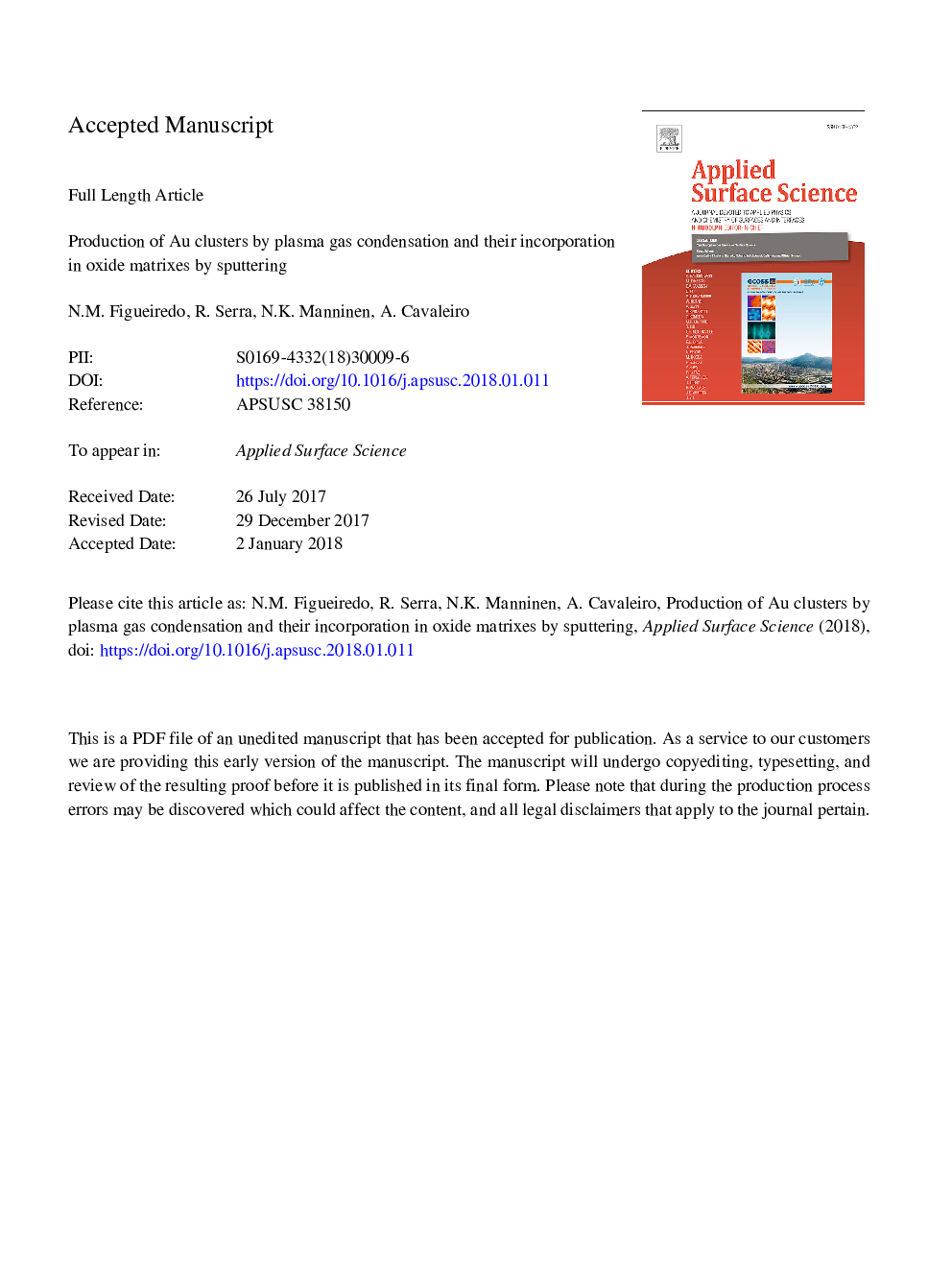| Article ID | Journal | Published Year | Pages | File Type |
|---|---|---|---|---|
| 7835169 | Applied Surface Science | 2018 | 27 Pages |
Abstract
Gold clusters were produced by plasma gas condensation method and studied in great detail for the first time. The influence of argon flow, discharge power applied to the Au target and aggregation chamber length on the size distribution and deposition rate of Au clusters was evaluated. Au clusters with sizes between 5 and 65â¯nm were deposited with varying deposition rates and size dispersion curves. Nanocomposite Au-TiO2 and Au-Al2O3 coatings were then deposited by alternating sputtering. These coatings were hydrophobic and showed strong colorations due to the surface plasmon resonance effect. By simulating the optical properties of the nanocomposites it was possible to identify each individual contribution to the overall surface plasmon resonance signal. These coatings show great potential to be used as high performance localized surface plasmon resonance sensors or as robust self-cleaning decorative protective layers. The hybrid method used for depositing the nanocomposites offers several advantages over co-sputtering or thermal evaporation processes, since a broader range of particle sizes can be obtained (up to tens of nanometers) without the application of any thermal annealing treatments and the properties of clusters and matrix can be controlled separately.
Keywords
Related Topics
Physical Sciences and Engineering
Chemistry
Physical and Theoretical Chemistry
Authors
N.M. Figueiredo, R. Serra, N.K. Manninen, A. Cavaleiro,
